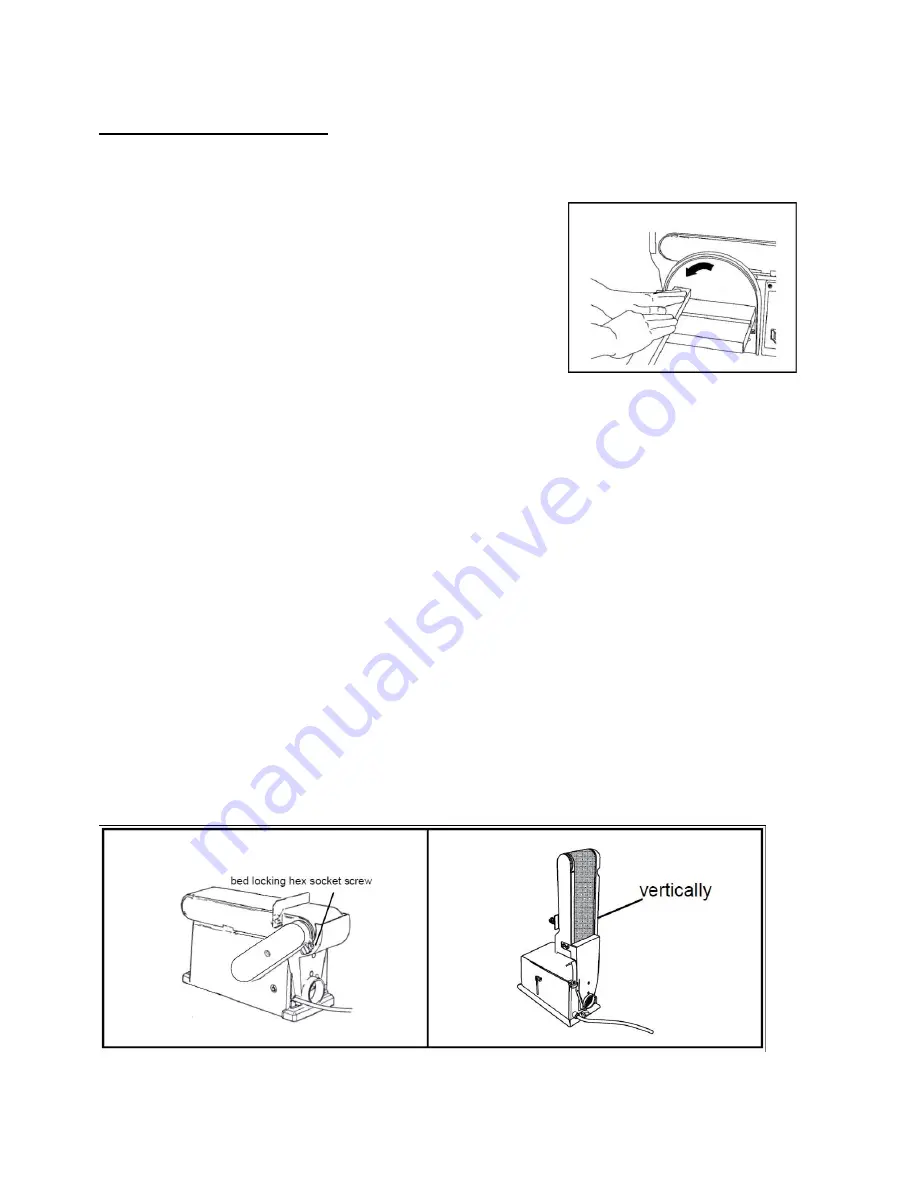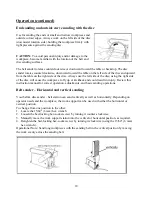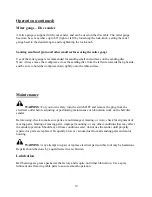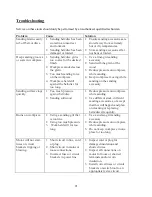
18
Operation (continued)
End sanding and outside curve sanding with the disc
Use for sanding the ends of small and narrow workpieces and
outside curved edges. Always work on the left side of the disc
(downward rotation side), holding the workpiece firmly with
light pressure against the sanding disc.
CAUTION:
To avoid personal injury and/or damage to the
workpiece, become familiar with the rotation of the belt and
disc sanding surfaces.
The belt sander rotates counterclockwise or downward toward the table or backstop. The disc
sander rotates counterclockwise, downward toward the table on the left side of the disc and upward
from the table on the right side of the disc. Always use the left side of the disc; using the right side
of the disc will cause the workpiece to fly up or kickback and could result in injury. Review this
instruction manual for correct operation, adjustments, and basic sanding operations.
Belt sander – Horizontal and vertical sanding
Your belt & disc sander – belt station can sand vertically as well as horizontally. Depending on
operator needs and the workpiece, the work-support can be used with either the horizontal or
vertical position.
To change from one position to the other:
1.
Locate the 15/64" (6 mm) hex wrench
2.
Loosen the bed-locking hex-socket screw by turning it counter-clockwise.
3.
Manually move the work support station into the vertical or horizontal position, as required.
4.
Retighten the bed-locking hex-socket screw by turning it clockwise (using the 15/64" (6 mm)
hex wrench).
Operational Note: Sand long workpieces with the sanding belt in the vertical position by moving
the work evenly across the sanding belt.








































